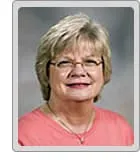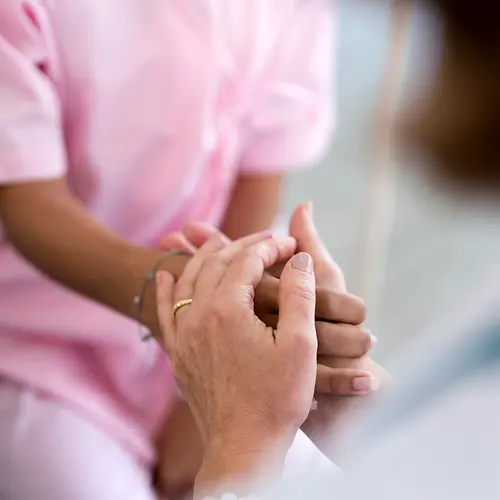
Breast cancer survivor Mary Manasco, 59, lives in Jackson, Miss. In May 2008, a routine mammogram showed a suspicious spot in Manasco's right breast, which led to another mammogram, a biopsy, and a diagnosis of stage 1 breast cancer.
The diagnosis upset her, of course. "When you hear the word 'cancer,' you pretty much freak out," Manasco says.
But she took comfort in the fact that her cancer was small and that she and her doctors at the University of Mississippi Medical Center had a plan -- do a lumpectomy (surgery to remove her tumor, but not her whole breast), followed by radiation therapy and treatment with the drug Femara.
"I knew there was a chance of recurrence. I'm not that naïve. But it's like, OK, that will take care of it," Manasco said.
But in May 2009, a routine mammogram showed something that turned out to be another cancer in the same breast.
"Even though I'd had radiation, even though I was on Femara, it still showed up," Manasco says.
This time, it was an "in situ" cancer, not the invasive cancer she'd had before. "In situ" means the cancer hasn't moved beyond the spot where it started; "invasive" cancer means it has spread beyond its tiny starting point, even if it's only gone a short distance, not throughout the body.
A mastectomy -- surgical removal of that breast -- was recommended. Manasco and her doctors agreed to also remove her other breast, which hadn't shown signs of cancer.
Getting diagnosed again was "so much more emotional" than the first time, Manasco says. "I could only tell one person a day, because I would just cry."
But she was crystal clear on her decision to have both breasts removed. "I simply want to get rid of it and hopefully really move on with the rest of my life," she says.
Manasco had no family history of breast cancer, but her mother had died of liver cancer at age 51.
Treatment and recovery: Manasco says recovering from her lumpectomy "was not a big deal," and she could drive two days after the surgery.
She had her double mastectomy in July 2009, and says there is still some swelling under her arm and her back is still "a little sore ... but other than that, I'm doing OK. I'm getting back to normal, whatever normal is. I just have a new normal now."
Manasco also got radiation therapy, but not chemotherapy. She says the radiation therapy didn't hurt, and the health care providers were wonderful. But she found herself "dreading" it because she had to go for radiation so often -- five days a week for seven weeks. "That's just a mental thing," she says.
When Manasco completed her first round of radiation therapy in 2008, after her lumpectomy, she got to hold her first grandchild, who had been born a week earlier. But after her mastectomy, she couldn't pick her up while she recovered from the surgery. "She's a squirmy, wiggly, heavy 11-month-old and she was just way too much to hold," Manasco says.
"She doesn't really want to be held anyway ... she's probably, like, 'Thank goodness that old woman isn't kissing on me all the time!" Manasco laughs. "But it's been hard to not even be able to pick her up."
Choosing reconstruction: Manasco chose to undergo breast reconstruction after her double mastectomy. But she says she wasn't emotional about losing her breasts.
"If I were younger, it might have," Manasco says. "I'm old enough -- having a breast or not did not matter one bit to me. I even considered not having reconstruction and, who knows, maybe wear a prosthesis, maybe not."
Manasco says her appearance after her mastectomy "did not even bother me the first time that I saw when the bandages were off .... the part about being alive and assuming everything is taken care of is much more important."
Ultimately, she decided to go ahead with reconstruction. "I can be Dolly Parton if I want to, but I don't want to," she laughs. "I had big enough breasts the first time ... I just want clothes to look halfway decent. I don't really care. The fact that I've had two different episodes [with breast cancer] and I'm really feeling fine -- that's the main thing."
Clean sheets, new pajamas: If you want to do something kind for a breast cancer patient, Manasco has some advice.
- Change their sheets. "Crisp, clean sheets feel so good when you first get in them. You're in the bed at least half the time for the first few weeks" after a mastectomy, Manasco says.
- Get them some button-down pajamas and shirts. While recovering from a mastectomy, button-down tops are easier.
- Volunteer to wash their hair. "My husband washed my hair," Manasco says. "He was pouring the whole pitcher full at one time. I'm like, I'm drowning! Just rinse it gently! But he did a wonderful job... take somebody to get their hair cut -- those kinds of things that women understand and guys don't."
"Having casseroles or salads or food -- that's awesome. Flowers are wonderful. But the little things, like clean sheets or going to find you a new pair of pajamas that button down the front because you're sick of the others -- those are the little things that women understand," Manasco says.
Share your breast cancer stories on WebMD's breast cancer message board.

